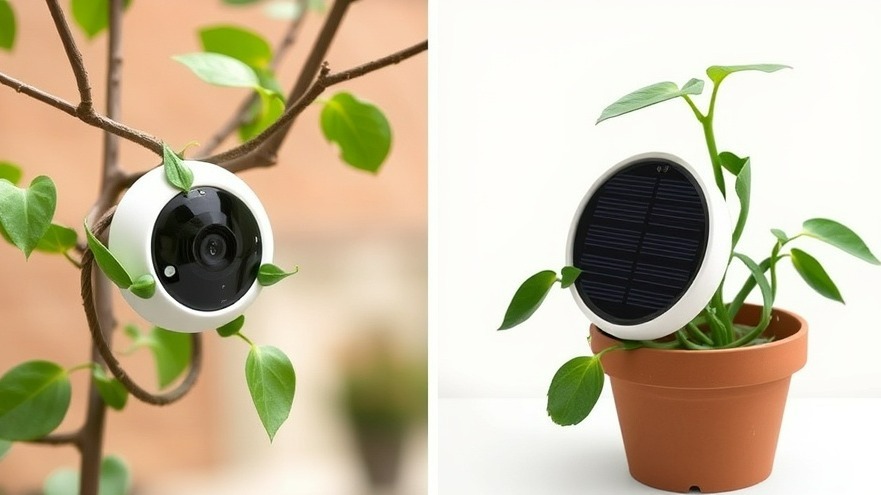
Discover Nature from Home: The Petal Camera's Unique Approach
The Petal camera, developed by Slovenian tech company Bird Buddy, heralds a new era in wildlife observation. This innovative device uses artificial intelligence to transform backyard encounters with wildlife into captivating mini documentaries, reminiscent of BBC's acclaimed nature series. With its compact design, the Petal camera serves as both a standalone tool and a vital part of the Wonder Blocks smart-garden ecosystem, merging technology with nature in an unprecedented way.
Transforming Backyards into Nature Observatories
Imagine stepping into your backyard and being greeted not just by flora, but also by the wonders of local fauna. The Petal camera aims to make this a reality, allowing digital nomads and nature enthusiasts alike to connect with their environment without leaving their workspace. As it captures the movements of insects and birds, the camera narrates their stories, using its built-in AI storytelling engine to create an engaging viewing experience.
The Power of AI: How the Petal Camera Works
Equipped with advanced AI technology, the Petal camera can identify over 2,000 species of critters and plants, offering users an enriching, educational experience. It activates upon detecting any movement or noise from its chosen subjects, ensuring that every capture is spontaneous and authentic. The resulting footage is curated into a narrative that not only educates users on local biodiversity but also helps them understand the ecosystem's balance. Users receive alerts regarding environmental changes and an Impact Score, a metric that quantifies their contribution to local conservation efforts.
Design Matters: Merging Aesthetics with Functionality
Part of the Petal camera's charm lies in its design. Resembling a flower, the device is visually appealing and blends seamlessly into garden settings. Bird Buddy's team intentionally chose bright colors to attract pollinators, directly integrating needs of the ecosystem into their design philosophy. With thoughtful construction using natural materials and recycled biocomposite plastics, the camera doesn’t just promote engagement with nature — it supports sustainability as well.
Creating a Sustainable Ecosystem
The Wonder Blocks system extends beyond the Petal camera, offering a range of modules that contribute to enhancing urban biodiversity. Whether it’s a bee observatory or a water feature, each component is designed to foster an environment where both people and wildlife can thrive. Bird Buddy co-founder Franci Zidar emphasizes that the system is about more than observation — it is fundamentally about understanding and sustaining the ecosystems around us.
The Implications for Remote Workspaces and Living
This innovation represents a shift for digital nomads. Working from home often leads to disconnection from the world outside, but the Petal camera opens up opportunities for integrating nature into daily routines. As individuals work, small reminders of the vibrant life occurring just outside their windows can enhance mental well-being and productivity. Embracing nature could redefine how we experience our living and working environments.
Actionable Insights: Incorporating the Petal Camera into Your Life
For those seeking to enhance their connection with nature, adopting the Petal camera into daily life could be transformative. Here are some practical steps to consider:
Create a designated nature space: Make an area in your backyard attractive for wildlife to visit.
Engage with the content: Actively watch and share the mini documentaries to inspire others.
Explore Team Up: Connect with other local nature enthusiasts through online platforms to share insights and observations recorded by the Petal camera.
In summary, the Petal camera not only serves as a whimsical addition to personal gardens but also functions as a tool for ecological education and wellness. It fosters a deeper appreciation for the environment while enhancing the remote work experience. The integration of nature into our daily lives is not just beneficial; it is essential for a holistic approach to health and productivity.
Call to Action: Explore more about how the Petal camera can revolutionize your backyard experience and make your work-from-home routine more enriching. For anyone looking to merge technology with nature in meaningful ways, the Petal camera is an exciting opportunity that you shouldn't miss!
 Add Row
Add Row  Add
Add 




Write A Comment